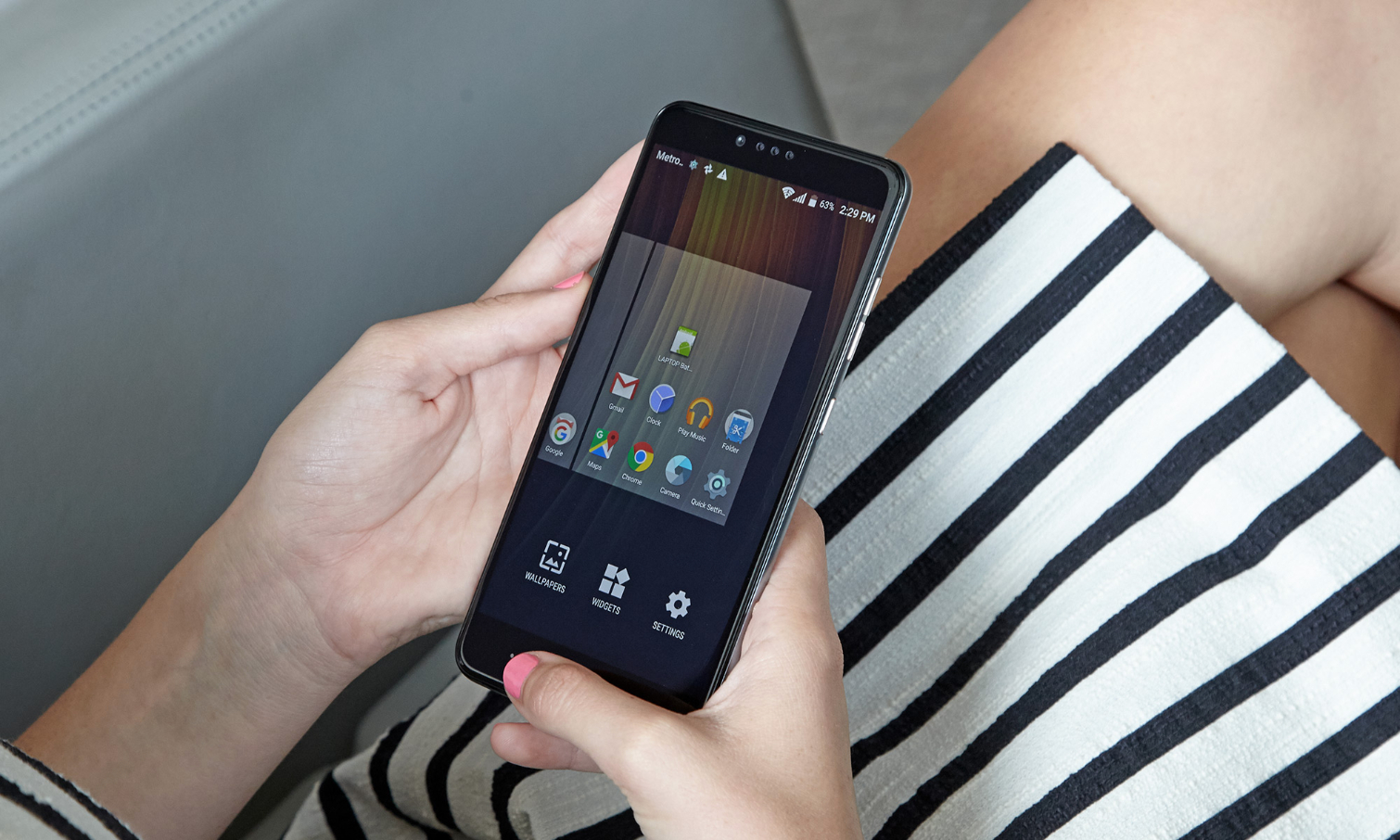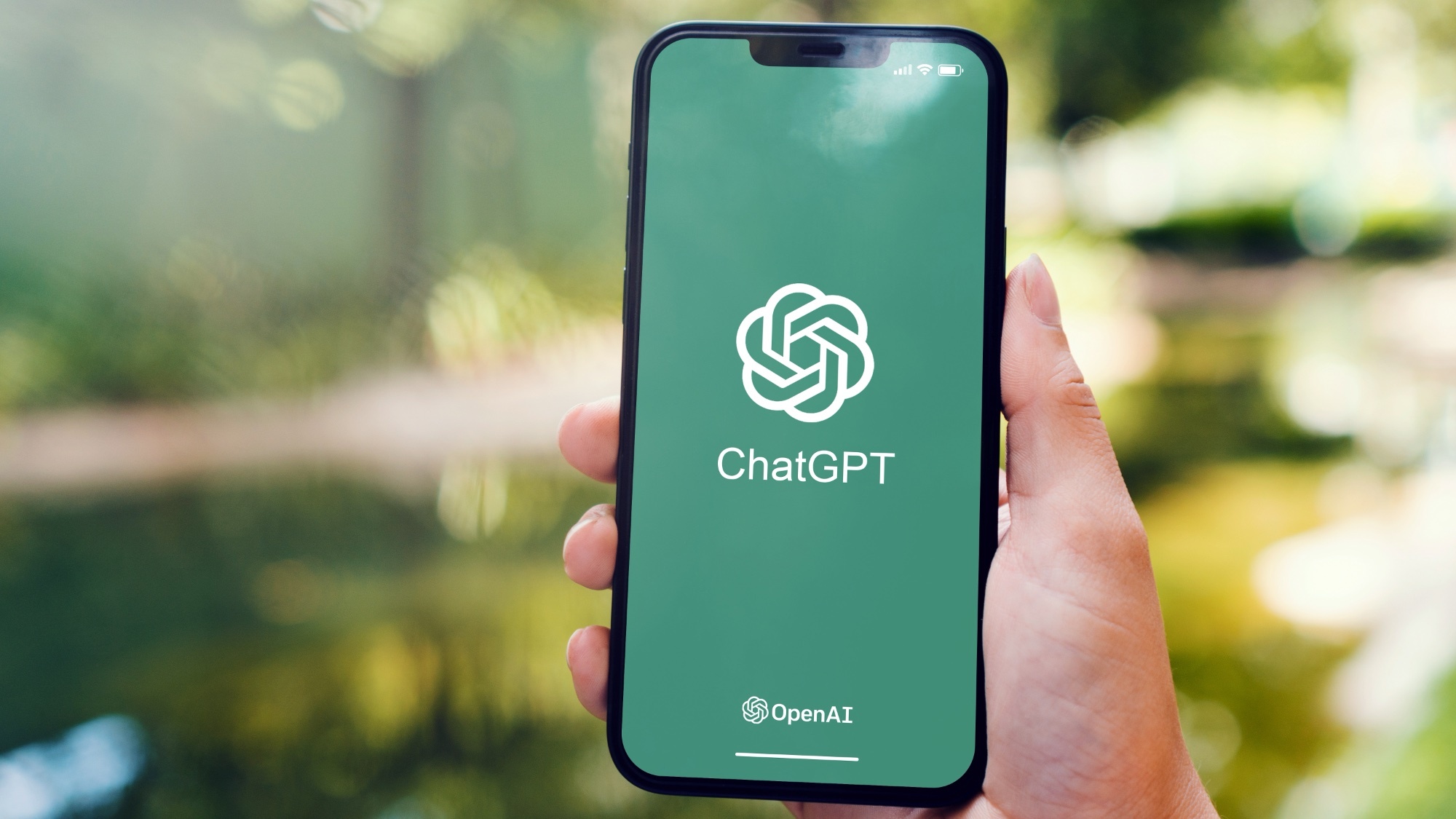Tom's Guide Verdict
ZTE’s Zmax Pro is a good budget phone for anyone shopping for price, display size and solid battery life that lasts throughout the day.
Pros
- +
Bright 6-inch display
- +
Compelling price given its specs
- +
Sleek
Cons
- -
Lackluster cameras
- -
Limited to one carrier
Why you can trust Tom's Guide
Walking the line somewhere between phone and mini tablet, the ZTE Zmax Pro offers a big 6-inch screen for a tiny price of $99. Looking at the Zmax Pro's price tag alone, you wouldn't think that it could rival the features of a more expensive devices, but the Pro packs a punch when it comes to long battery life and a bright, clear display. While it lacks the speed and photo capabilities offered by more fully-featured budget models, and it's locked to the MetroPCS network, the Zmax Pro is a great option for those on a budget.
Design
Here's the thing: the Zmax Pro is huge. Depending on what you're looking for, this phablet could offer a host of pros or cons just in terms of design. The phone's color scheme is certainly a pro — the huge 6-inch screen is set in a navy brushed metal body with rose gold accents along the inner rims of the camera and touch screen sensors on the back.
Though ZTE's Zmax 2 wasn’t quite as sleek looking as the Zmax Pro, it did weigh slightly less at 6 ounces compared to the Pro’s 6.9. If weightiness doesn't bother you, the phone’s ergonomics might. I had a difficult time wrapping my hands comfortably around the edges of the phone to reach the fingerprint sensor, especially if I was trying to handle the phone with just one hand.
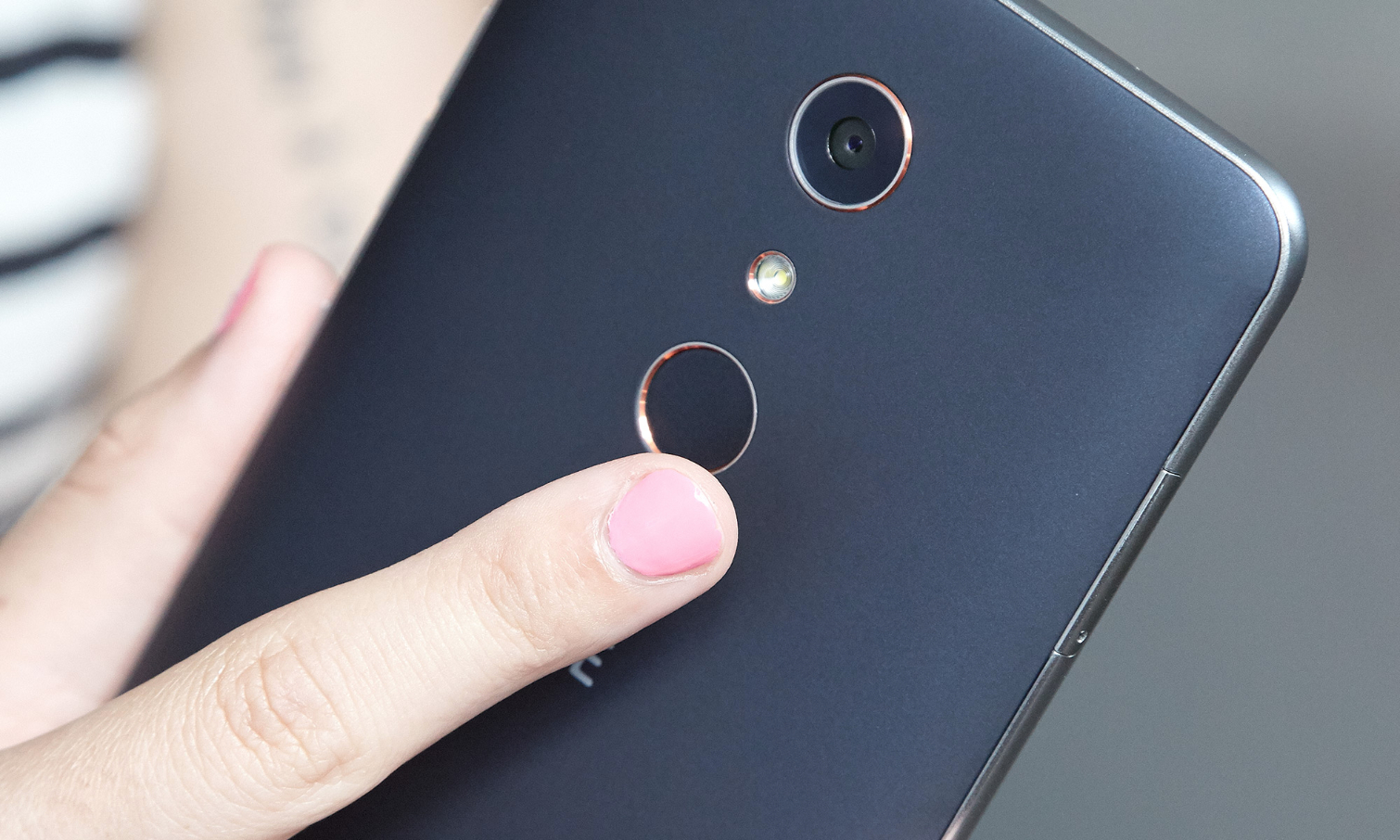
As someone who is used to smaller-screened, easily pocketable phones, I had a hard time adjusting to the Zmax Pro's proportions. If you're a phablet fanatic, though, this size shouldn't bother you. The similarly low-priced ZTE Obsidian weighs in at 4.65 ounces and has a smaller, 5.4-inch screen, and for $100 more, you could get the Moto G4 with a 5.5-inch display at just under 6 ounces.
MORE: And the Best Mobile (4G) Network In the U.S. Is...
Display
The Zmax Pro's vivid 1920 x 1080 screen didn't disappoint, with especially bright, clear graphics when I streamed highlight videos from the Democratic National Convention. The display clearly picked up the bright reds, deep blues and brilliant whites as I watched the Clintons revel in the DNC's balloon shower.
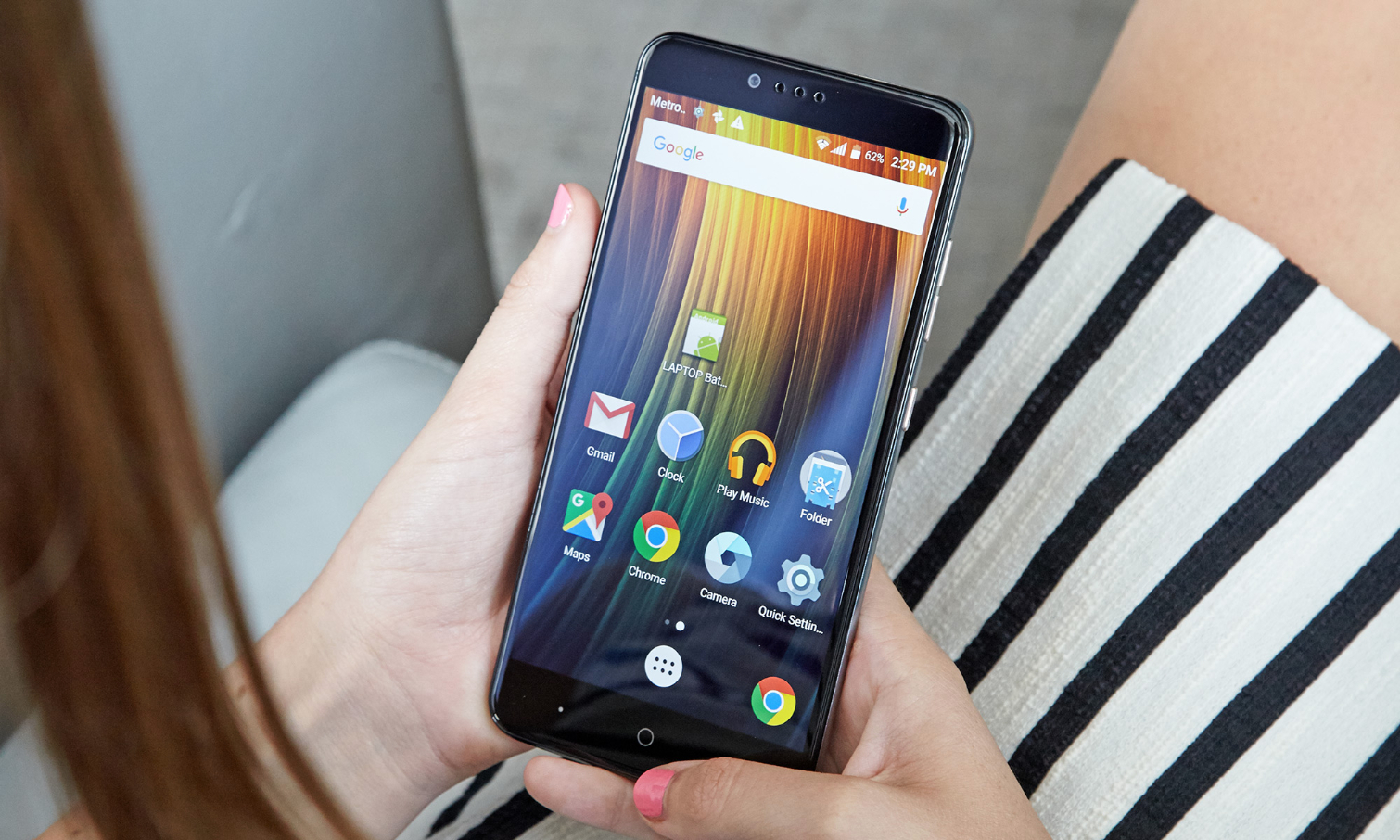
Using a light meter, we measured the Zmax Pro's display at 420 nits of brightness. That's brighter than the ZTE Zmax 2 (380 nits). It's a little less bright than the ZTE Obsidian, which measured 426 nits of brightness and not quite as good as the average smartphone's reading of 441 nits. Using the phone in direct sunlight, I had some difficulty seeing the display clearly, even when brightness was maxxed out.
The G4 shows off a wide range of colors, scoring 110.4 percent on the sRGB color gamut scale, though that lags the 132.6 percent score tallied by the average smartphone I didn't have any difficulty seeing the bright reds, blues and yellows, even as I threw Pokeballs in direct sunlight. Though the Zmax Pro doesn't have the widest color range, at least the colors it does showcase are accurate. The phone notched a Delta-E score of 0.48. (Numbers closer to zero are better.) That's much better than the Obsidian (3.67) as well as the Moto G4 (2.3), and well ahead of the 4.4 score tallied by the average phone.
If weightiness doesn't bother you, the phone's ergonomics might.
Like the Zmax 2, the Zmax Pro delivers clear sound quality and powerful volume loud enough to blast outside on a windy day. The Zmax Pro's speakers are discreetly located on the top, bottom and on one side of the phone's thin edges. Sound played out clearly using headphones as well, though the headphone jack's location, directly on top of the phone, did get in my way slightly as I tried to walk and carry the Zmax Pro at the same time.
Fast performance at a discount
Throughout my everyday use of the Zmax Pro, I found that its performance was totally passable, though nothing that's going to set any speed records. For a budget phone, the Pro's performance is entirely worth the price. Loaded with a 1.5GHz Snapdragon 617 quad-core CPU, the phone easily ran 10 applications at once, only struggling when I streamed music simultaneously.
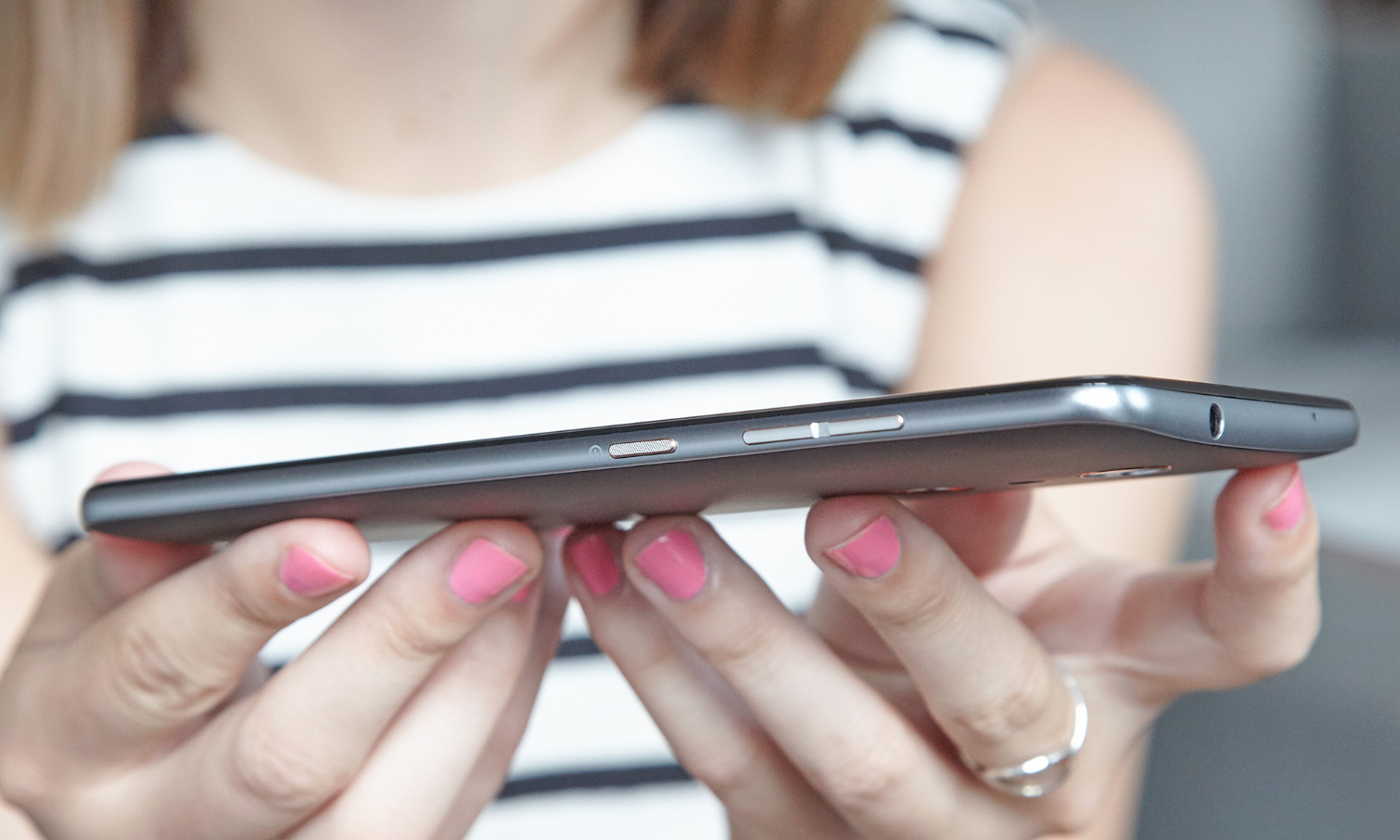
On the Geekbench 3 test measuring overall performance, the Zmax Pro scored 3,136. That's not far off the average smartphone's score of 3,133, and it’s much better than the Zmax 2, which came in at a low 1,321. Most importantly, the Zmax Pro outperforms other phones in its class such as the Moto G4 (3,028) and ZTE Obsidian (1,353).
For our video-editing test, which involves converting a 204MB video from 1080p to 480p, the Zmax Pro finished in 7 minutes 12 seconds. That's faster than the Zmax 2 (9:44) and it's a slight improvement from the Moto G4, which finished in 8 minutes flat.
The Zmax Pro failed to impress with its graphics performance. The Zmax Pro turned in a score of 9,729 in the 3DMark Ice Storm Unlimited Test, very similar to the Moto G4 (9,719). While well ahead ahead of the Obsidian (2,616) and the Zmax 2 (4,369), you won't confuse this for a graphics powerhouse, as the average phone scores a 14,471 on this test.
Budget phones like the Zmax Pro are quickly becoming contenders, making bad battery life a thing of the past in low-priced smartphones.
As I played through several levels of Jetpack Joyride, the graphics on this side-scrolling game ran smoothly but loading time wasn’t crazy impressive, especially when I had multiple other apps open.
Battery life
With the Zmax Pro, ZTE touts the kind of long-lasting battery life offered by its other phones, like the Obsidian (1,800-mAh) and Zmax 2 (3,000-mAh). The Zmax Pro features a larger 3,400 mAh integrated battery that promises to keep the phone charged for even longer.
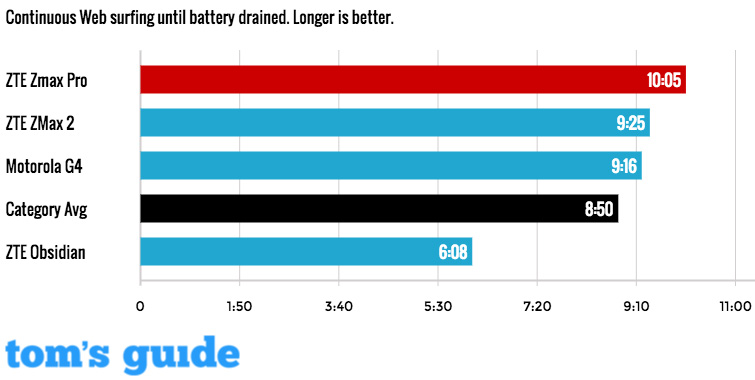
In the Tom's Guide battery test, which consisted of web surfing over the MetroPCS network at 150 nits of brightness, the Zmax Pro's larger battery timed out at 10 hours and 5 minutes. Comparably, the Moto G4's smaller 3,000 mAh battery notched 9:16. An average smartphone lasts 8:35, so you'll get more than a full day's use out of the Zmax Pro.
Though the Zmax Pro doesn't have the widest color range, at least the colors it does showcase are accurate.
Having crazy battery life is a huge plus these days, with data usage and streaming at an all-time high. Budget phones like the Zmax Pro are quickly becoming contenders, making bad battery life a thing of the past in low-priced smartphones.
Cameras
I was less than wowed when it came to the camera performance on the Zmax Pro. ZTE did upgrade the 8-megapixel camera on its back to a more standard 13-megapixel, but some issues still persisted.
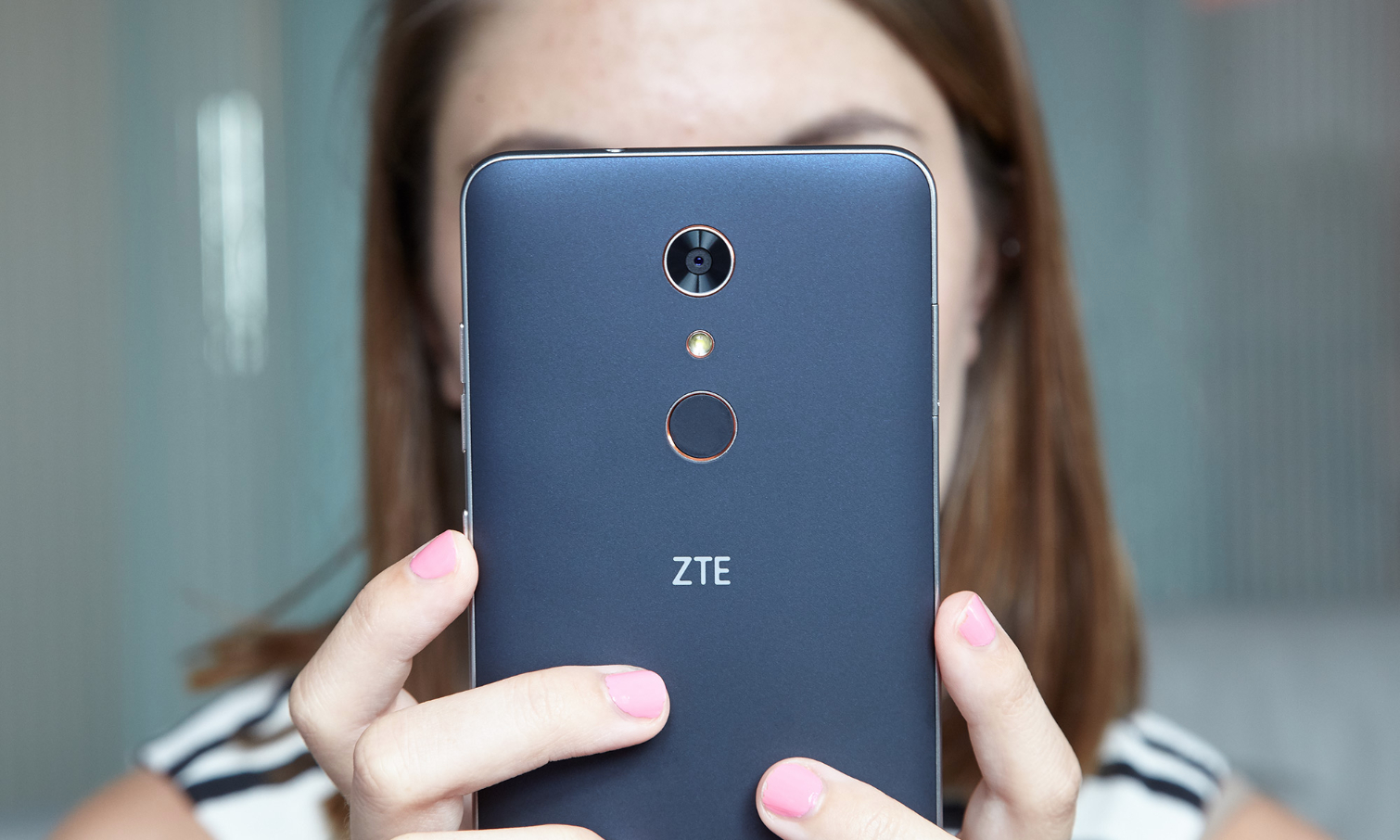
In a photo I took of our rooftop garden, the Zmax Pro's shot looks sharp, but the experience of capturing it that way was difficult. I had to tap the screen multiple times before I felt like the image was totally color-balanced and in focus. By comparison, this same process took 2 seconds using my iPhone 6s.
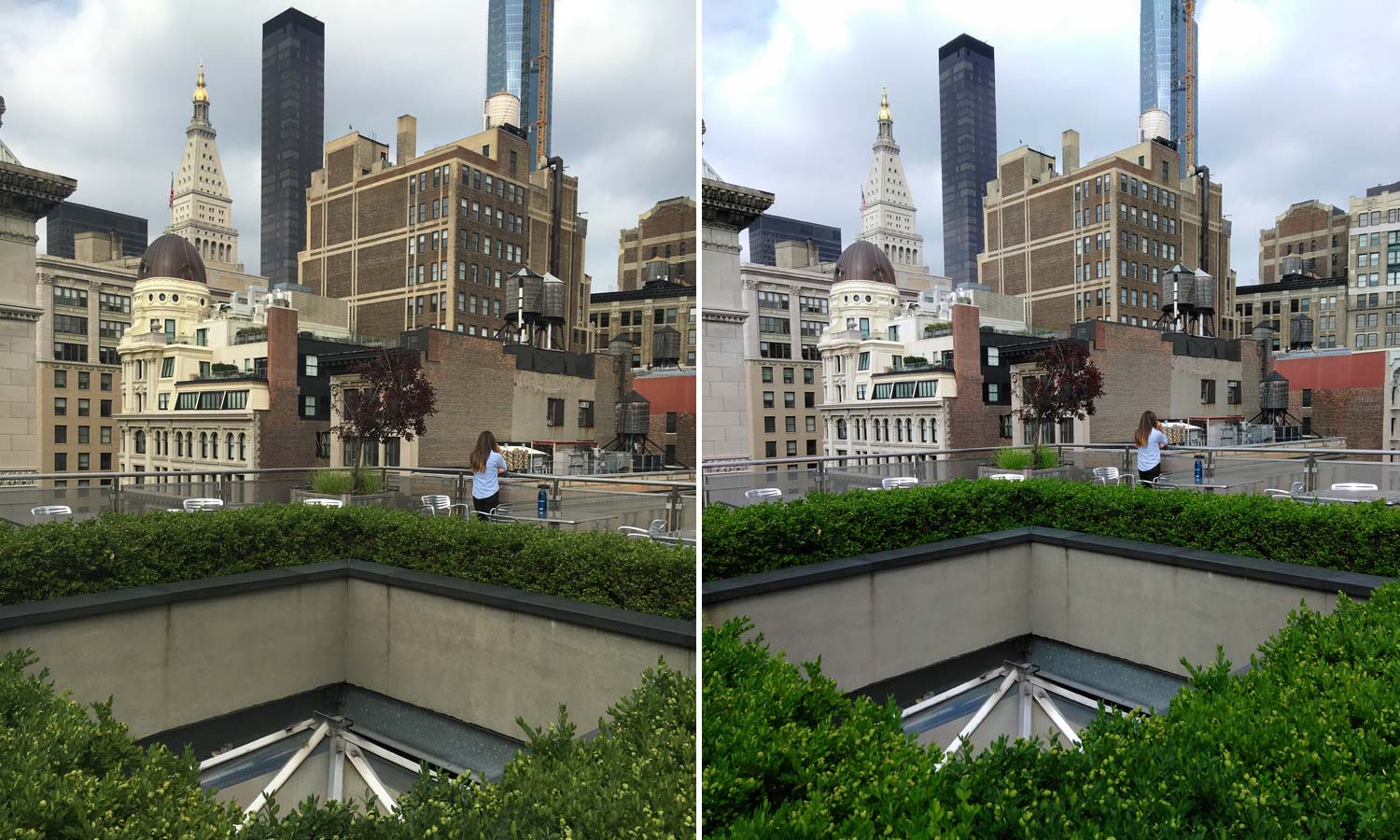
Low or isolated lighting was no friend to the Zmax Pro. In these photos I snapped from the middle of a concert crowd, you can hardly make out the details of the singers' face, edges are somewhat blurry and brighter colors look overexposed. You can still make things out, but the Zmax Pro is definitely not always high-resolution.
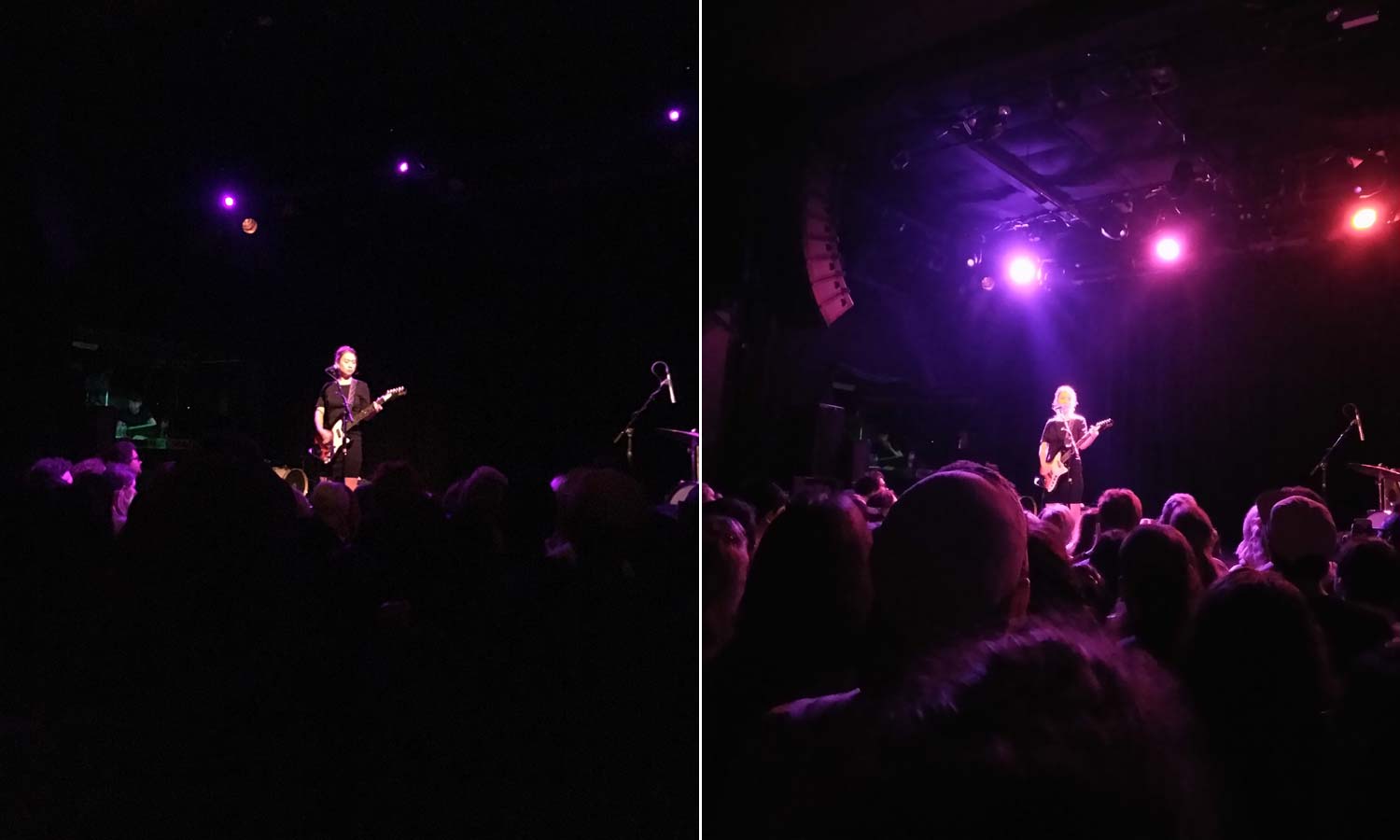
The 5-MP front camera on the Zmax Pro appears cloudy in indoor settings, but works fine in the outdoors. Again, the best results came when used in bright daytime lighting that balanced out the colors naturally. The Zmax Pro's selfie cam is also automatically set to level 5 Beauty Mode, which gave my skin a subtle gray tint, and which you can thankfully disable.

Using video was probably the most frustrating part of the Zmax Pro — the zoom function is choppy and definitely not conducive to using Snapchat, which is the one app with which I regularly utilize my phone's zoom function.
MORE: Best Smartphones on the Market Now
Standard OS, but tied to one carrier
The Zmax Pro runs on standard Android 6.0.1 Marshmallow, which looks clean and makes navigation feel intuitive if you’re already used to the Android system. The Zmax Pro has zero bloatware.
I would be remiss not to mention the biggest downfall of the Zmax Pro: it is locked to the MetroPCS network. MetroPCS fare well in our testing of prepaid carriers, but if you'd prefer to use the phone with another wireless provider, you're out of luck.
Bottom Line
The Zmax Pro doesn't have any breakthrough features, but at $99, it really doesn't need to. ZTE's latest phone is a useful phablet if you're shopping for price, a larger display size and better-than-average battery life. If you're OK being tied down to the MetroPCS network — and it fared the best among the prepaid services we've ranked — the Zmax Pro should fit the needs of anyone demanding a device with a large display and a small price tag.
Lauren L'Amie is an SEO Content Strategist at Wirecutter, and was previously an editor for Tom's Guide, writing mainly about phones and social media. She has also written for Cosmopolitan, New York Magazine, and The Daily Dot, focusing on a range topics from health, sex, and lifestyle to news and politics.
-
Bronxpilot Lauren's review nails it. After two weeks I'm pleased with the phone. Note-taking with OneNote via stylus input is very important to me so the 6.0 screen is better than the prior 5.5 LG3 and 5.7 Note that I owned.Reply
The screen is good but not great. Reading print content, type is very clear but I wished it would deliver a crisper black.
I have had no problems with processor lags. Battery does not get me through a whole day. Other reviewers have reported that charging takes a lot of time but I have not found this to be true. Lauren writes correctly that the camera is mediocre. The video, though, is quite poor in both picture and sound.
So the phone meets my primary need for note-taking quite well and it passable in other ways. Not bad for a $99 purchase.
I n my case I see the phone as an interim purchase until a higher end 6.4 inch phone comes out. Maybe Lenovo Phab Pro 2 will be the one.
